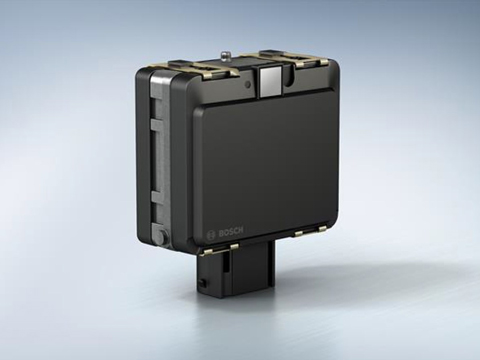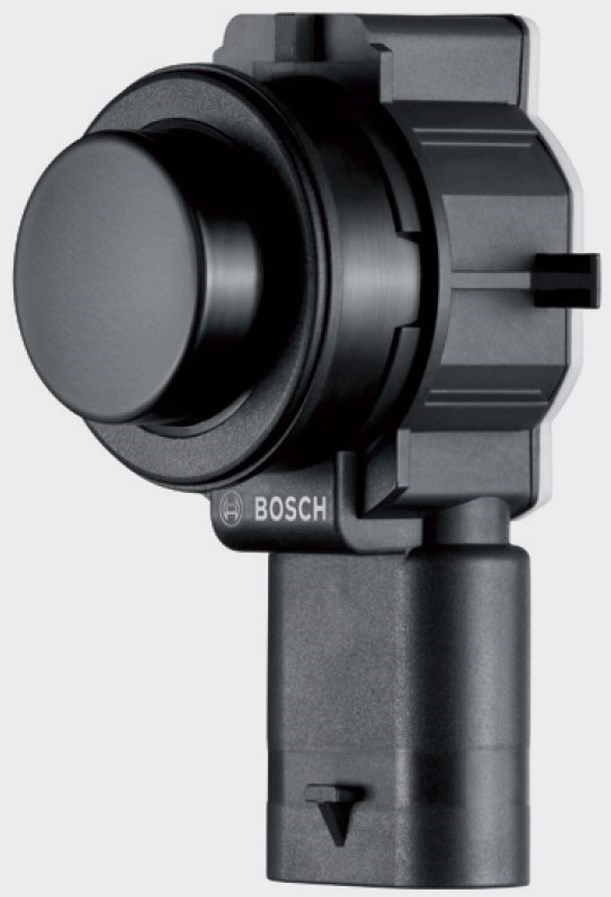Environment detection/environmental sensor systems
To ensure that sophisticated driver assistance systems are reliable, they have to constantly monitor the vehicle’s surroundings to be able to precisely evaluate it. This is where environmental sensor systems come in.
Function
The purpose of an environmental sensor system is to enable accurate and extensive – even near-seamless – 360-degree perception of the vehicle’s entire surroundings. In modern vehicles, environmental sensor systems consist of a whole host of different sensors. They detect the surroundings of the vehicle, i.e. distance to obstacles and other road users, as well as their direction and speed of movement. These parameters are converted into electrical signals, which are evaluated in control units and, if necessary, translated into actions (e.g. emergency braking or steering manoeuvres). The environmental sensor system also provides the basis for highly automated and fully automated driving.
Types of sensors
Different types of sensors are used for environmental detection. A distinction is made between beam-based and image-based sensors.
Beam-based sensors for measuring pulse reflection duration (measuring the time it takes for a pulse to be reflected):
- Ultrasonic sensors: sending and receiving sound waves
- Radar sensors: sending and receiving electromagnetic waves
- Lidar sensors: sending and receiving light waves
Image-based sensors for evaluating image content:
- Mono cameras: optical range detection, one lens
- Stereo cameras: optical range detection, two lenses
Sensor detection ranges
For a range of up to around 5 metres from the vehicle, ultrasonic sensors and cameras (video sensors) can be used. The parking assist system, for example, uses ultrasonic technology to monitor this range. For monitoring the rear of the vehicle, cameras can either assist the ultrasonic-based parking assist system with pulling into/out of parking spaces and with manoeuvring, or replace it.
Long-range ultrasonic sensors and short-range radar sensors are used for ranges starting from around 5 metres from the vehicle. This range covers a maximum of around 20 metres. One application area is warning against overtaking vehicles in the blind spot.
Mid-range radar sensors that have a working frequency of 24 GHz and video sensors are used for detecting objects up to 160 metres in front of the vehicle and up to 100 metres behind the vehicle.
The far-range area covers a range of up to 250 metres. Long-range radar sensors are mainly used for the far-range area.
Sensors for the mid and far ranges are used principally for avoiding accidents and sudden obstacles. These have to be detected in good time, so that the vehicle can react automatically with emergency braking and, if need be, steering intervention.
Special cases: car-to-car and car-to-infrastructure communication
With car-to-car communication, cars communicate with each other. With car-to-infrastructure communication, the car communicates with the infrastructure, e.g. traffic lights. These systems enable the driver to receive information and be warned against hazards that cannot be detected by the vehicle sensors.
Networked environmental detection
The direct assignment of a driver assistance system to a specific sensor is becoming more and more redundant: individual functions can be achieved using various types of sensors, and different systems can access data from the same sensor. For this, the interface between the environmental detection and the vehicle assistance systems has to be open. As a result, obstacle detection is now possible using both radar and image evaluation.
Sensor data fusion
Sensor data fusion involves the combining of two or more different sensors, i.e. the combining of their data. For example, it is currently still the norm to combine a camera sensor and a radar sensor. The use of sensor data fusion makes it possible to expand the measuring range and increase the reliability and accuracy of the measurements. With the help of high-performance software algorithms, fusing the data sets of the two sensors produces a highly detailed “picture”, which forms the basis for efficiently interpreting the vehicle’s surroundings.
For reasons of cost, developers are currently attempting to achieve a sensor efficiency level that would enable sensor combining to be forgone altogether. This type of system actually already exists in series, whereby the obstacle detection function for the emergency braking can be performed reliably by just one sensor, instead of two.
Safety
Many active and passive safety systems function on the basis of sensor information. Thanks to significant progress in the development of new sensors, there has been a constant increase in the capabilities of safety and driver assistance systems in recent years. Sensors thus have a key role to play in increasing safety on our roads. When it comes to self-driving vehicles, sensor systems aren’t just an extra function, but an essential requirement for safe functionality. Self-driving vehicles will, in part, require several dozen sensors.







